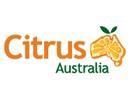Citrus canker restricted areas have been lifted in the Darwin, Palmerston and rural Northern Territory.
Following a minimum six-month host free period without detection of citrus canker across all 12 restricted areas in the greater Darwin area, restricted areas for the control of citrus canker in Darwin, Palmerston and rural areas were lifted on 20 March, 2020.
The (13th) restricted area in the Northern Territory (NT), located in Katherine, was lifted in November 2019.
This milestone was reached through significant efforts by the National Citrus Canker Eradication Program plant health inspectors who undertook delimiting surveillance, host plant removals and regrowth inspections at all premises in the 13 restricted areas over the past 18 months.
Citrus Australia CEO, Nathan Hancock, paid tribute to Government agencies and staff involved in the response, and to growers forced to make difficult adjustments to their operations.
“The logistical challenge of tracking plants from the point of origin and inspecting all properties in restricted areas was enormous and has only been achieved through a significant amount of hard work,” Mr Hancock said.
“We are appreciative of the time taken to eradicate this disease and further monitor for its presence. If left unchallenged, it would have a detrimental effect on our citrus exports, and the significant flow-on effect this provides our regional communities.
“It has proven a difficult and challenging time for our citrus growers in the NT and we thank them for their assistance in eradicating this disease.”
Lifting the restricted areas will allow affected residents and businesses to reintroduce, grow and cultivate citrus canker host plants on their properties and will also allow for the unrestricted movement of citrus fruit and leaves into and out of these areas.
All affected residents, businesses and growers are now being contacted directly by the Program to advise them of the lifting of restrictions.
For affected green-life retailers, ongoing compliance work will be undertaken to ensure that restocking of citrus plants is achieved from citrus canker free areas in addition to ensuring information is available for customers about control area restrictions and to ensure ongoing monitoring of plant sales and movements.
Control areas around the greater Darwin and Katherine regions will remain in place until the NT can prove the disease has been successfully removed through an extensive surveillance program during 2020.
This means that any citrus plants, fruit or leaves cannot be moved outside or between control areas without a permit. Control areas include Darwin, Palmerston, and the Darwin rural area, Bachelor, Adelaide River and Katherine.
The Program is continuing to support the local citrus industry through regular weekly inspections of fruit and leaves to maintain interstate market access. In the last three months, 39,000 kaffir lime leaves (3000/week) and 7,800 pieces of citrus fruit have been inspected (600/week).
There are 10 citrus growers currently trading as registered growers from the NT to interstate markets.
Regular orchard inspections have taken place in accordance with trade protocols to ensure property freedom status from citrus canker is maintained and trade can continue.
Two rounds of orchard inspections have been completed, one in December and one in February. A minimum of 600 trees per orchard are inspected each time.
Over 8,400 trees have been inspected in the last two inspection rounds. A further round of inspections is scheduled for April 2020.
The program is now focused on gathering evidence to prove that citrus canker is not present in the host plant population and has not spread from infected plants.
This will be achieved through a range of surveillance activities including re-surveillance of remaining trace plants, surveillance of sentinel plants on previously infected premises and a general surveillance of host plants in the broader community.
The NT Department of Primary Industry’s Chief Plant Health Officer, Dr Anne Walters, said she was pleased with the progress and thanked the community of Darwin for their support.
“Without the support of the community in self-reporting and supporting our plant health inspectors visiting their properties, it would have been very difficult to move towards proving the Territory is free from citrus canker,” she said.
“This milestone is great news for the Darwin community as it allows residents and businesses in the former restricted areas to reintroduce, grow and cultivate citrus plants on their properties. It also allows unrestricted movement of citrus fruit and leaves into and out of the former restricted areas.”
 For more information:
For more information:
Citrus Australia
Tel: +61 3 5023 6333
Email: office@citrusaustralia.com.au
www.citrusaustralia.com.au
